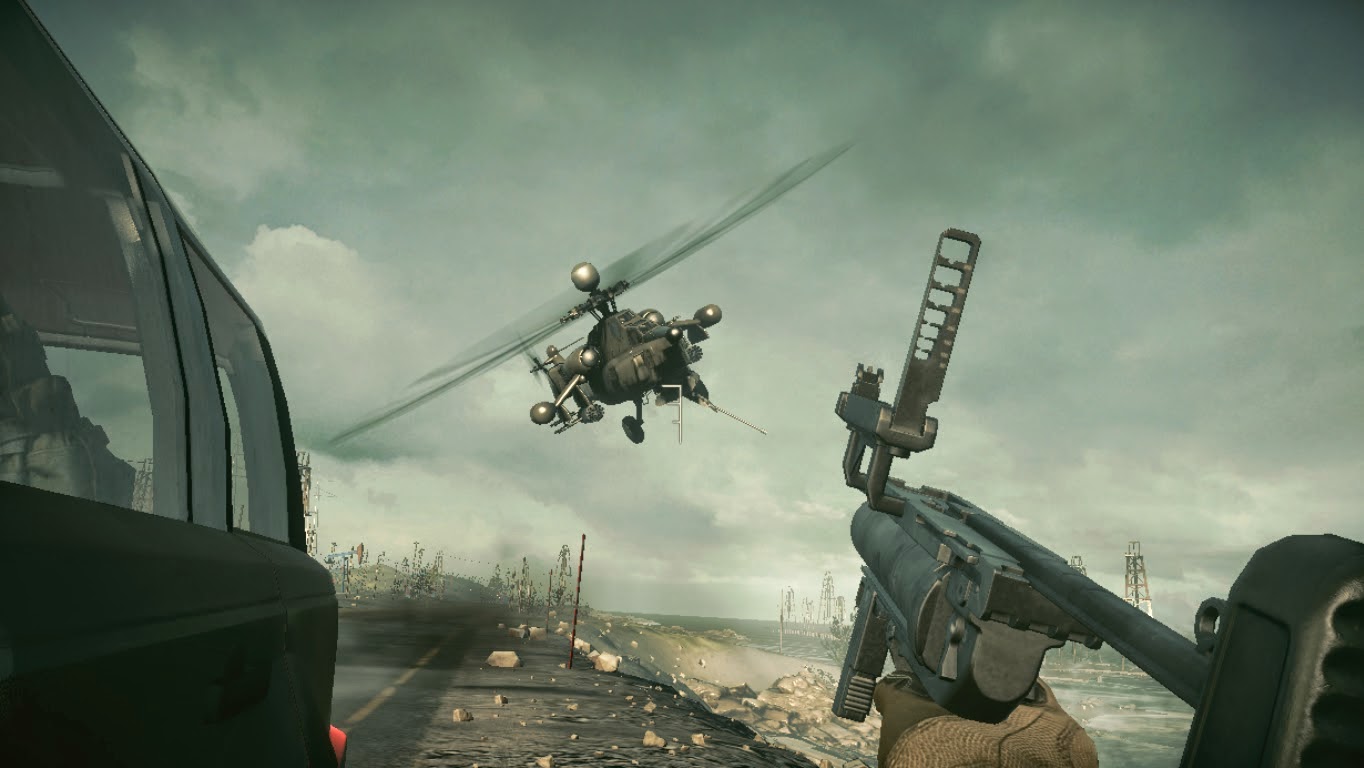Splatoon 2 is full of them. Every little mechanic in Splatoon was designed around its ink system, and In the middle of a turf war, the ink is your weapon, your savior and your doom. If you haven't played, it goes something like this:
You've got a super-powered Super Soaker filled with your ink. It's how you defeat your enemies, but you also splash that ink on the ground. You can hide or swim through ink of your color, which lets you move way faster and also fills your ink tank. The other team's also got Super Soakers (or huge, menacing paint rollers) armed with a complementary color of ink. Their ink slows you down, and every step in enemy ink sucks your shoes in like wet concrete. It also does damage, up to a point. This stuff gets everywhere.
It's pretty simple in concept, really. Using the same weapon for movement, cover, and But as you trade volleys of paint, you're also painting the ground around each other. Remember how you get stuck in enemy ink? Yeah. If you don't defeat your opponents quick enough, you inevitably end up in a pile of the stuff and become a sitting duck.
 |
| I took a wrong turn and ended up in a world of brightly-colored panic. I think purple team deliberately cut off my escape route to watch me suffer. |
Territory Control, Miniaturized.
Imagine you're fighting another Squidkid and you realize you're outmatched. Maybe you missed a few too many shots, or maybe she's on the high ground with a big Charger or a ink-spewing minigun.
Having high ground is a serious advantage. Sure, you can just paint the wall and swim up, but that takes time and you can still be shot doing it. Ink from most weapons travels in an arc, meaning she might be able to hit you from up there while your shots fall short.
So you want to get away. Since you can only swim through your ink, you look behind you where you hopefully left a trail. If it's still there, sweet, you can dive in and get out of there. But if another enemy painted over it, you might be left stranded. Being stuck in enemy territory is literal when that territory is covered in a layer of wet glue.
But of course if you turn to shoot at the ground, you aren't shooting at the enemy. This is a decision I have to make often. It's usually a pretty panicked decision, admittedly, because I'm not the greatest at aiming. If that girl on the high ground isn't the greatest either, you might get away with it, shooting and swimming until you get back to the relative safety of your color territory.
Or, if you're having a really bad day, your gun might just cough and splutter, because you ran out of ink.
 |
| Low Ink! The Splattershot Pro runs dry really fast. I didn't have enough to save my Charger friend here. Luckily, I had room to swim away. |
Running on fumes
Ok, let's get general for a second. If you've ever played a survival horror game like Resident Evil or anything where ammo is a precious resource, you'll recognize that being out of ammo is terrifying. It's one of modern gaming's clearest examples of how to get an emotional reaction out of a simple mechanic.
Splatoon is definitely not a survival horror. But that feeling is still there, and it's almost stronger than in other games. Your ink is your life, remember? Being out of ammo means you're not only defenseless, you're trapped.
As strong as the feeling is, it's short-lived. You slowly regenerate ink, giving you a few shots every second. It won't stop that ink roller trying to pancake you, but it can paint some turf so you can dive in and fill your tank back up.
But in that situation, when your enemy's got you locked down, out of ink and out of escape routes, the panic is real. And on the off chance you make it out, it feels amazing.
Getting a feel for it
When all of this goes against you, it can be pretty tense. Sometimes, in the worst situations, you get a Splat Bomb tossed at your feet and there's literally nothing you can do. It's crazy how powerless this colorful Nintendo game can make you feel, but there it is.
There is always something you can do about it, though, and that's what makes learning this game so rewarding.
A good chunk of learning Splatoon is ink management and territory control. Learning how fast each different weapon consumes ink, learning to leave escape routes and paint over the right enemy lanes, and when you have enough ink or need to fill up. It's a lot of fast decision making, but since it's all built around a handful of simple mechanics, it makes it one of the best feeling multiplayer games I've played in a while.














